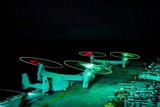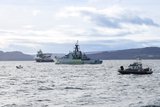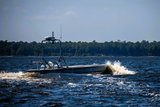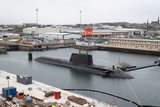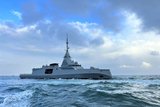HMS Queen Elizabeth completes work package
Babcock International has completed the first docking and maintenance period on the Royal Navy’s HMS Queen Elizabeth at its facility in Rosyth, UK, it was announced on 21 May.
After the planned six-week work package was successfully delivered, the carrier departed Rosyth through the specially designed rollerfender system into the River Forth.
Work under the contract included replacing 284 hull valves and renewing all cathodic protection electrodes and anodes, as well as painting the hull and carrying out work on the stabilisers, rudders and shaft lines.
HMS Queen Elizabeth is due to enter service in 2020 after extensive whole-ship trials.
Related Equipment in Defence Insight
More from Naval Warfare
-
![How the UK Royal Navy is powering up its hybrid fleet to combat new threats]()
How the UK Royal Navy is powering up its hybrid fleet to combat new threats
Since it announced its move towards a new “hybrid navy” earlier this year, the force has announced a number of new uncrewed technologies in the works.
-
![US and UK to begin Trident II D5 Increment 8 in October 2026]()
US and UK to begin Trident II D5 Increment 8 in October 2026
Trident II D5 Increment 8 will involve improvements to the shipboard navigation subsystem for the US Ohio and Columbia and the UK Dreadnought and Vanguard submarine classes.
-
![US Navy starts acquisition process for uncrewed maritime systems for support missions]()
US Navy starts acquisition process for uncrewed maritime systems for support missions
The USN is interested in uncrewed capabilities that can carry out explosive ordnance disposal, mine countermeasures, force protection, ISR and anti-submarine missions.
-
![HMS Agamemnon: details of the dive and what the Astute-class signifies for the UK Royal Navy]()
HMS Agamemnon: details of the dive and what the Astute-class signifies for the UK Royal Navy
As HMS Agamemnon moves closer towards joining the UK’s in-service submarine fleet, how does the sixth Astute-class fit into the Royal Navy’s defence strategy?
-
![French Navy frigates to align with Hellenic Navy after Aster missile enhancement]()
French Navy frigates to align with Hellenic Navy after Aster missile enhancement
The FDI frigates will have an enhanced warfare capability that matches the configuration of ships ordered by Greece.









